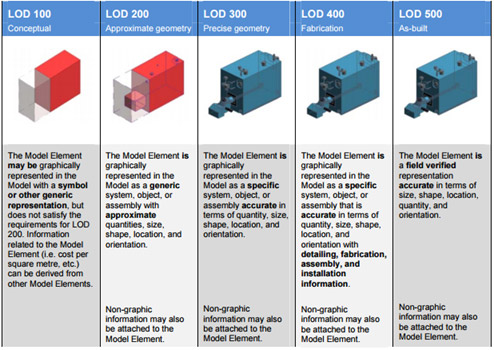The LOD of an object is its level of detail (geometry and data) in the digital model.
We talk of “Level of Detail” and “Level of Development“. The latter indicates the level of development of the digital model. That is to say that according to the progress of a project, we need an object with more or less evolved geometry and data, depending on calculation, manufacturing, or operation requirements.
Many organisations have looked at LODs, in particular to try and define limits between the various levels, and have issued guides. For example:
- > The NATSPEC guide, National Australian “BIM Paper BIM and LOD”. See complete specifications on: bim.natspec.org

In some BIM calls for tenders, a specific LOD level may be specified.
To manage LODs, the platform offers several functionalities:
- Define the LOD of a geometry under the responsibility of the creator of the object.
- Replace an object with a LOD XXX by an object with LOD YYY via the various plugins.
- Search an object by its LOD level.
Furthermore, with collaborative possibilities, users shall be invited to enrich an object by adding different LOD versions they may have had to create to fulfil their own requirements.

